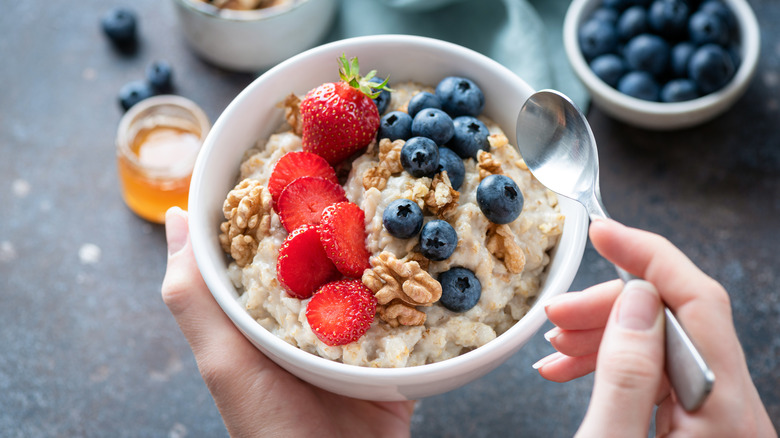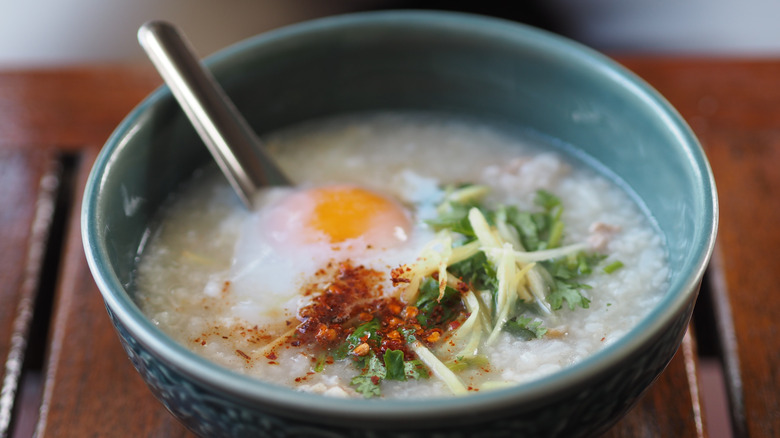What Makes Porridge Different From Oatmeal?
Porridge has been filling bellies and nourishing humans for thousands of years. With a history that long, it's no surprise porridge has also infiltrated pop culture. You're probably familiar with the popular fairy tale about one uninvited house guest who broke into a cottage owned by three bears. She then proceeded to break their furniture, sleep in their beds, and eat up all their porridge. But what, exactly, is porridge? And how does it differ from everyone's favorite hot breakfast cereal, oatmeal?
Porridge is any whole grain or legume cooked in liquid until it forms a mashed cereal. It is often cooked in water, milk, or broth. Usually served hot, porridge is commonly made with grains such as quinoa, barley, rice, or oats. Yep, you read that right. Cooked oats, also known as oatmeal, is a type of porridge. Oatmeal is always made with oats that have been processed in some form or fashion (the oats are rolled, flattened, cut, or ground before they become cereal). So, oatmeal is a type of porridge. But not all porridge is oatmeal. So when you refer to porridge, know that you are simply referring to a category of food, rather than a specific dish like oatmeal. That's the difference.
Types of porridge
Porridge comes in many forms and is a popular dish all over the world. While we may gravitate towards oatmeal as our porridge of choice in the United States, we also love grits, a coarse porridge made from white corn that is popular in the South and often served with just butter. You can upgrade your grits with ingredients like cheese or herbs to make them extra savory.
Take a trip around the world and you'll find porridge variations at every stop along the way. Grits has an Italian cousin, and that is polenta, which is made from yellow corn. Polenta is easy to make at home and can served with your favorite protein or even deep-fried for a real treat. Congee, made with rice and originating in Asia, is a savory variety that often includes shrimp or chicken. Kasha, frequently served in Eastern Europe, is made with buckwheat groats and can be served sweet or savory. You may recognize the words, "pease porridge hot, pease porridge cold," from the 18th century children's nursery rhyme. Pease porridge isn't just the stuff of children's songs, though. It's also a real British dish made with split peas.

